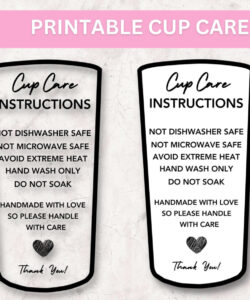Twi work instruction template. Ever find yourself explaining the same thing over and over again? Whether it’s guiding a new staff member through a process, assisting a customer with troubleshooting, or even just reminding your children about their tasks, clear communication is key. But repeating yourself over and over can be exhausting and ineffective. That’s where an instruction template proves useful. It’s like having a pre-written script for common tasks and procedures, helping you save time and maintain consistency.
Instruction templates are a powerful tool for streamlining communication and ensuring everyone’s on the same page. They offer an organized format for delivering information, simplifying the process for people to comprehend and follow guidelines. From basic checklists to comprehensive step-by-step instructions, an effective instruction template can greatly enhance clarity, minimize mistakes, and increase overall productivity.

Picture trying to put together a piece of furniture without any instructions. Irritating, isn’t it? The same principle is true for any task, large or small. An instruction template gives a basis for clear, concise, and straightforward directions. It helps you structure your thoughts, making sure you include all the necessary steps and specifics. This reduces the chances of mistakes and confusion, leading to improved outcomes and higher efficiency.
Secondly, an instruction template can help you avoid missing crucial steps. By providing a pre-determined format, it encourages you to think about all the essential details. This reduces the risk of excluding key information that could result in mistakes or frustration. For example, if you’re creating instructions for putting together a piece of furniture, a template might remind you to include details about the tools required, the order of assembly, and any safety precautions.
Time is another precious asset that an instruction template can assist in conserving. Instead of starting from scratch every time, you can simply adjust your template to suit the particular task. This significantly minimizes the time spent drafting instructions, letting you concentrate on other essential aspects of your job or project.
Lastly, employing an instruction template can enhance the overall quality of your instructions. By providing a structured format, it inspires you to meticulously think through each step, address possible challenges, and add valuable tips and cautions. This results in more comprehensive and user-friendly instructions, leading to greater satisfaction for everyone involved.
The first step in creating an effective instruction template is recognizing your intended audience. Who are these instructions for? What is their level of familiarity and expertise? Understanding your audience will help you tailor the language and complexity of the instructions accordingly. A template for seasoned technicians will be quite different from one created for beginners.
Next, clearly define the objective or goal of the instructions. What should the user accomplish after completing these steps? A clear objective gives context and assists users in grasping the purpose of the instructions. This is especially important for more complex tasks or procedures.
After you have a clear goal, divide the task into small, consecutive steps. Each step should be short and straightforward to grasp. Avoid using jargon or technical terms that your audience may not be familiar with. Use clear and simple language that everyone can understand.
Think about adding visuals like diagrams, photos, or videos. A picture is worth a thousand words, and visuals can greatly enhance understanding, particularly for complex or technical tasks. They can also help clarify ambiguous steps or highlight important details that might be missed in written instructions.
Lastly, test and perfect your instruction template. Once you’ve created a draft, ask someone to look it over and offer feedback. This can help you spot any parts that need enhancement, like vague instructions or missing steps. Tweaking and refining your instruction template will guarantee that it is functional and easy to follow.
In conclusion, an instruction template is a powerful tool for anyone who needs to communicate clearly and effectively. Whether you’re writing a user manual, creating a training document, or simply explaining a task to a colleague, using a template can save you time and effort while ensuring your instructions are easy to understand and follow.
By following the tips outlined above, you can create effective instruction templates that improve clarity, promote consistency, and boost productivity. So, the next time you catch yourself explaining the same thing over and over, think about using an instruction template. You might be surprised at how much easier it makes your life.





